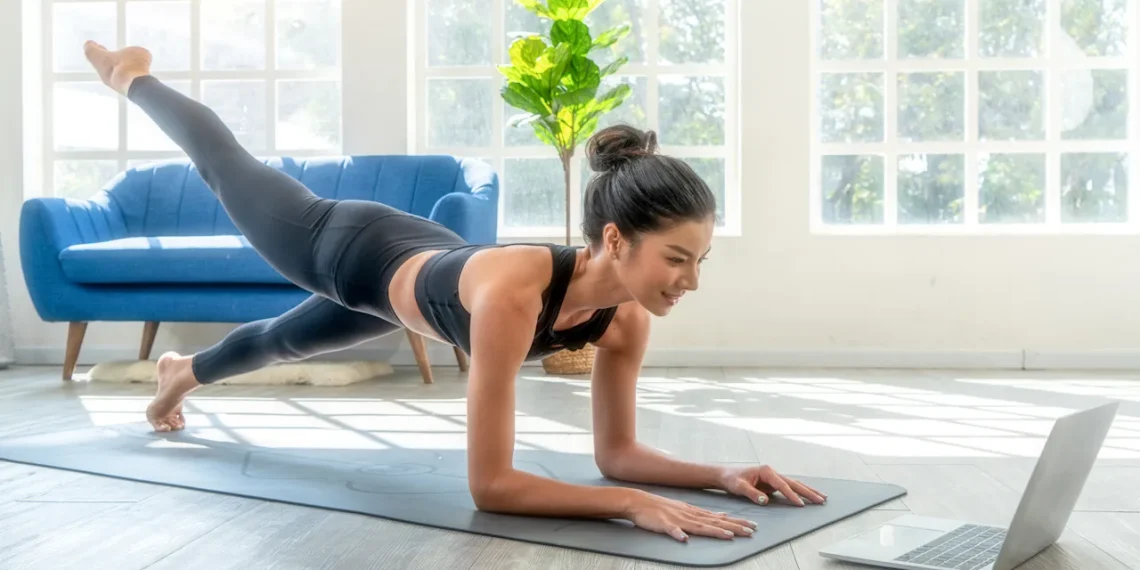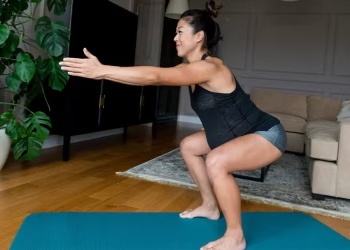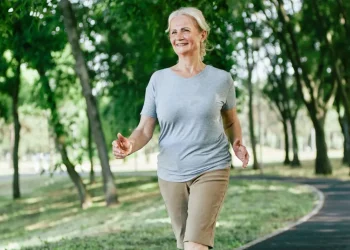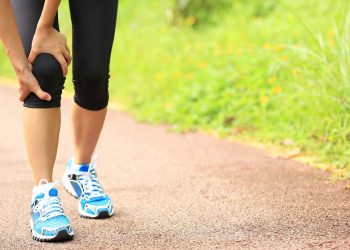In a fitness culture often dominated by high-intensity workouts and extreme challenges, low-impact exercise offers a refreshing and sustainable alternative. These gentler forms of movement provide substantial health benefits while minimizing stress on joints, bones, and connective tissues. Whether you’re recovering from an injury, managing a chronic condition, starting your fitness journey later in life, or simply seeking a more balanced approach to physical activity, low-impact exercises can be transformative for both body and mind.
Low-impact exercise is defined not by its intensity but by the reduced stress it places on the body’s skeletal system. During these activities, at least one foot remains in contact with the ground at all times, or the body is supported in ways that minimize jarring movements. This doesn’t mean the workout is easy or ineffective. Many low-impact exercises can be quite challenging and deliver impressive results in terms of cardiovascular fitness, strength building, flexibility, and overall health improvement.
Understanding the Spectrum of Low-Impact Activities
The world of low-impact exercise is remarkably diverse, offering options that can suit virtually any preference, fitness level, or physical limitation. Walking remains the most accessible and widely practiced form of low-impact exercise. This fundamental human movement requires no special equipment beyond comfortable shoes and can be performed almost anywhere. The beauty of walking lies in its adaptability. A leisurely stroll provides gentle movement and stress relief, while brisk walking or power walking can elevate heart rate significantly and build cardiovascular endurance. Nordic walking, which incorporates poles similar to ski poles, engages the upper body and core while maintaining the low-impact nature of regular walking.
Swimming and aquatic exercises represent another pillar of low-impact fitness. Water’s buoyancy reduces the effective weight bearing on joints by up to ninety percent, making it an ideal environment for those with arthritis, obesity, or joint injuries. The resistance provided by water also ensures that muscles work harder than they would performing similar movements on land, creating an effective strength-building component. Water aerobics classes offer structured workouts with social interaction, while swimming laps provides both cardiovascular conditioning and full-body muscular engagement.
Cycling, whether on a stationary bike or outdoors, offers excellent cardiovascular benefits while the bike seat supports body weight and eliminates impact forces. The smooth, circular pedaling motion is particularly joint-friendly, and resistance can be adjusted to match individual fitness levels. For those seeking variety, elliptical machines simulate running movements without the impact, providing a middle ground between walking and jogging.
Tai chi, an ancient Chinese martial art characterized by slow, flowing movements and deep breathing, exemplifies how low-impact exercise can address multiple dimensions of health simultaneously. This meditative practice improves balance, flexibility, and muscle strength while promoting mental clarity and stress reduction. The deliberate, controlled movements require focus and body awareness, making tai chi particularly valuable for older adults concerned about fall prevention. Research has consistently shown that regular tai chi practice can reduce fall risk, improve cognitive function, and even help manage chronic conditions like fibromyalgia and Parkinson’s disease.
Yoga, with its countless styles and modifications, offers another holistic approach to low-impact fitness. Gentle yoga styles such as Hatha, Yin, or restorative yoga emphasize stretching, breathing, and mindfulness while building strength and flexibility gradually. Even more dynamic styles like Vinyasa can be practiced in ways that minimize impact while still providing challenging workouts. The emphasis on proper alignment and breath awareness in yoga cultivates a deeper connection between mind and body.
Pilates focuses on core strength, posture, and controlled movement patterns. Originally developed as a rehabilitation method, Pilates uses precise movements to strengthen muscles, particularly those supporting the spine, while improving flexibility and body awareness. Mat Pilates requires minimal equipment, while reformer Pilates uses specialized apparatus to provide variable resistance and support.
Benefits Across Different Populations
Low-impact exercises offer particular advantages for older adults navigating the natural changes that come with aging. As we grow older, bone density decreases, joint cartilage wears down, and balance becomes more precarious. Traditional high-impact activities may become uncomfortable or risky, but the body’s need for movement doesn’t diminish. Low-impact exercises allow older adults to maintain cardiovascular fitness, preserve muscle mass, and keep joints mobile without excessive risk. The balance and coordination required in activities like tai chi and yoga directly address fall risk, which is a leading cause of injury and loss of independence in later life. Additionally, the social aspects of group exercise classes can combat isolation and support mental health.
For individuals managing chronic conditions such as arthritis, fibromyalgia, or osteoporosis, low-impact exercise serves as both treatment and prevention. The gentle movement keeps joints lubricated and maintains range of motion, which can reduce pain and stiffness associated with arthritis. The muscle strengthening that occurs through regular low-impact exercise provides better support for vulnerable joints and helps protect bones. For those with fibromyalgia, activities like swimming and tai chi can help manage pain while avoiding the post-exercise flare-ups that sometimes follow more intense workouts.
Pregnant women and new mothers represent another population for whom low-impact exercise is particularly valuable. During pregnancy, hormonal changes increase joint laxity, and the body’s shifting center of gravity affects balance. Low-impact activities like swimming, prenatal yoga, and walking allow expectant mothers to maintain fitness and prepare for childbirth while accommodating their changing bodies. After delivery, these same activities provide a gentle path back to fitness while the body recovers.
Those carrying excess weight often face a challenging paradox: exercise is crucial for health and weight management, but extra pounds place additional stress on joints, making many activities uncomfortable or painful. Low-impact exercises break this cycle by providing effective calorie-burning and fitness-building opportunities without aggravating joints. Water-based activities are particularly beneficial, as buoyancy compensates for extra weight while still providing significant resistance for muscle building.
Athletes and fitness enthusiasts can also benefit from incorporating low-impact exercise into their routines. These activities provide valuable active recovery days, allowing the body to move and heal without accumulating additional stress. Cross-training with low-impact options can help prevent overuse injuries while maintaining or even improving overall fitness. Even elite athletes increasingly recognize that more intense training isn’t always better training, and strategic use of low-impact workouts can enhance long-term performance and longevity in their sports.
Choosing the Right Low-Impact Exercise for You
Selecting the most appropriate low-impact activities requires honest assessment of your current situation, goals, and preferences. Begin by considering any physical limitations or health conditions you’re managing. If you have arthritis primarily affecting your knees, for instance, swimming might be more comfortable than cycling, while someone with shoulder issues might find walking or cycling preferable to swimming. Consulting with your healthcare provider before starting a new exercise program is always wise, particularly if you have chronic health conditions or are recovering from injury.
Your fitness goals should also guide your choices. If cardiovascular health is your primary concern, activities like brisk walking, swimming, or cycling that elevate heart rate for sustained periods will be most beneficial. For those focused on flexibility and balance, yoga and tai chi move to the forefront. If building or maintaining muscle strength is important, consider resistance-based options like Pilates, aquatic exercise with equipment, or cycling with higher resistance settings. Many people find that combining different types of low-impact exercise provides the most comprehensive benefits.
Practical considerations matter too. Think about what resources you have available and what you’ll actually do consistently. The most perfectly designed exercise program is worthless if it doesn’t fit your life. If you don’t enjoy water or lack access to a pool, swimming isn’t a realistic choice regardless of its benefits. If group classes motivate you, look for tai chi, yoga, or water aerobics classes at local community centers or gyms. If you prefer exercising independently and value flexibility, walking or home-based yoga might suit you better.
Starting gradually is crucial, especially if you’re new to regular exercise or returning after a break. Even low-impact activities require your body to adapt to new demands. Begin with shorter sessions at lower intensities and progressively increase duration and challenge as your fitness improves. This approach not only reduces injury risk but also makes the process more enjoyable and sustainable. Most experts recommend starting with ten to fifteen minutes of activity and building up to at least thirty minutes on most days of the week.
Pay attention to how your body responds. Some muscle soreness is normal when starting new activities, but sharp pain, excessive fatigue, or symptoms that persist beyond a day or two warrant attention. Low-impact doesn’t mean no-impact on your body’s systems; you’re still creating beneficial stress that prompts adaptation. Learning to distinguish between productive discomfort and warning signs of problems is an important skill that develops with experience.
Building a Sustainable Low-Impact Exercise Routine
Consistency matters more than intensity when it comes to reaping the long-term benefits of low-impact exercise. Creating habits and routines that support regular activity will serve you better than sporadic bursts of enthusiasm followed by long breaks. Many people find that exercising at the same time each day helps establish the habit. Morning workouts energize the day ahead, while evening sessions can help release accumulated stress. The best time is simply the time you’ll actually do it consistently.
Variety within your low-impact routine can prevent both physical plateaus and mental boredom. Consider developing a weekly schedule that incorporates different activities. You might walk three days per week, practice yoga twice, and swim once, for example. This approach ensures you’re addressing different aspects of fitness while keeping things interesting. Many fitness facilities now offer diverse low-impact class options, making it easier to sample different activities and find what resonates with you.
Tracking your progress, whether through a simple journal, fitness app, or wearable device, can provide motivation and valuable information about what works for you. Note not just what you did but how you felt, both during the activity and in the hours afterward. Over time, patterns emerge that can help you optimize your routine. You might discover that morning swims leave you energized all day or that tai chi practice significantly improves your mood and sleep quality.
Conclusion
Low-impact exercise represents not a compromise but a sophisticated approach to lifelong fitness and health. These activities deliver powerful benefits across all dimensions of wellness while respecting the body’s need for sustainable movement patterns. Whether you’re managing specific health challenges, seeking a gentler path to fitness, or looking to complement more intense training, low-impact options deserve serious consideration. The key lies in finding activities you genuinely enjoy and can maintain consistently, then allowing those practices to become integral parts of your life. In our achievement-oriented fitness culture, there’s profound wisdom in choosing movement that nurtures rather than depletes, builds rather than breaks down, and supports a lifetime of vitality. The journey toward better health need not be punishing to be effective, and low-impact exercise beautifully demonstrates this truth.
- what is tai chi walking – the ultimate low impact exercise
- gentle low-impact practices
- gentle cardio alternatives
- joint-friendly low impact exercise
- low impact options for arthritis
- low impact exercise for seniors
- gentle exercises for elderly
- benefits of low impact walking
- qigong as low impact exercise
- mindful low-impact practices






